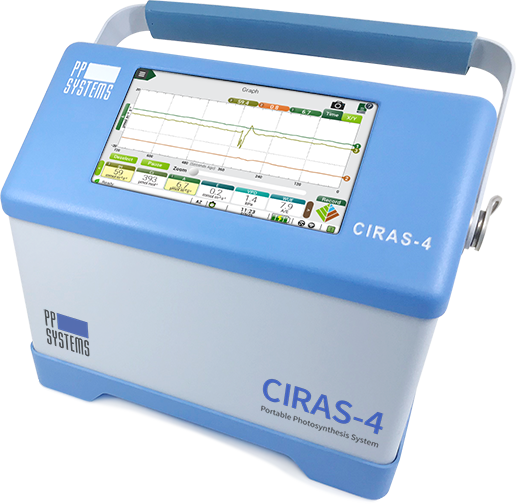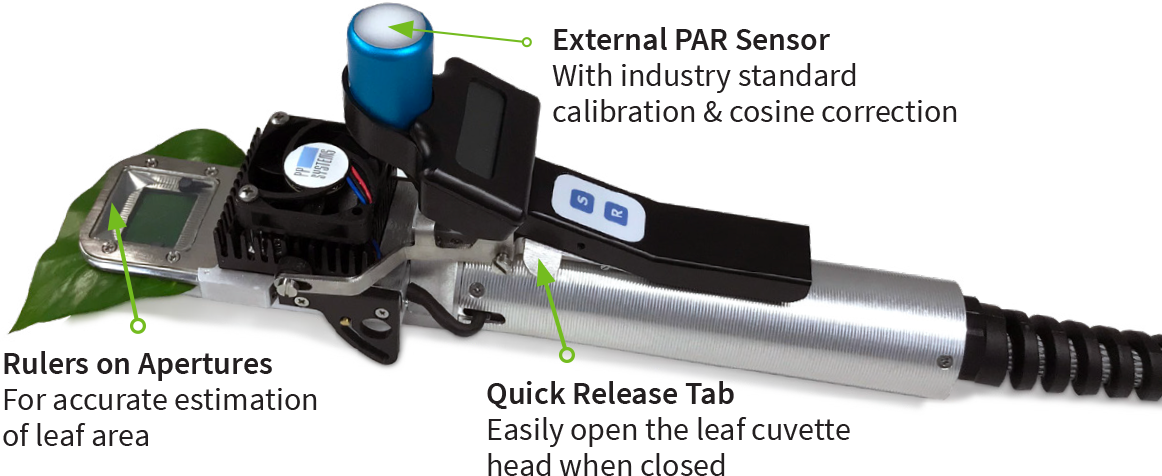CIRAS-4 Elevating the high-level field research experience
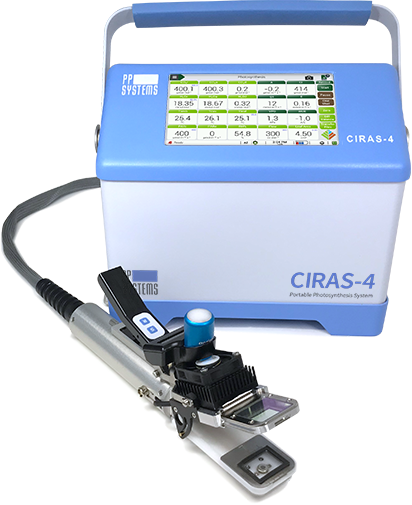
Don’t let its compact size fool you.
The highly accurate CIRAS-4 Portable Photosynthesis System is a lightning-fast portable powerhouse that will elevate your research experience.
Its advanced software is exceptionally intuitive and customizable. You can manage environmental controls—as well as how you view your data—all from the touchscreen.
It’s so easy to use, you can begin taking measurements right out of the box.
An exceptional user experience
Minimal Size. Maximum Performance.
The CIRAS-4 is designed with the high-level field researcher in mind. Its small size makes it the most portable photosynthesis system in its class, alleviating the need for assistance or tripods.
The innovative design of the CIRAS-4 utilizes its small system volume to ensure faster stabilization and the most rapid and accurate measurements available. Measurements in real-time allow the user to expand the parameters of their research and use their time and resources efficiently. Check out the size and weight of the CIRAS-4 console and leaf cuvettes, and you will quickly discover why smaller and lighter is better.
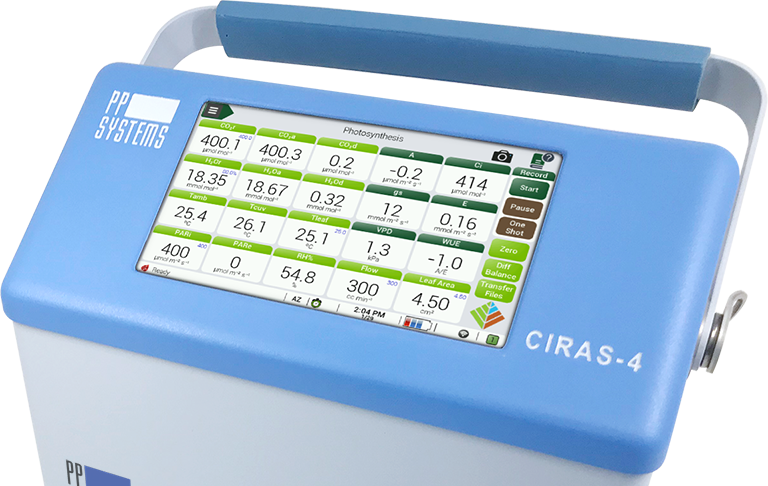
The CIRAS-4’s full-color touch display offers fast-response touch navigation for all system operations. Exceptionally bright LEDs are adjustable for sunlight readability in any condition.
Packed with power.
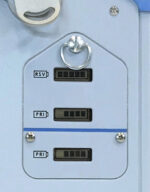 The CIRAS-4 comes standard with three (3) rechargeable Li-ion battery packs that provide 16+ hours of continuous operation. All 3 batteries can charge simultaneously allowing the user to collect lots of data without the interruption of swapping out battery packs.
The CIRAS-4 comes standard with three (3) rechargeable Li-ion battery packs that provide 16+ hours of continuous operation. All 3 batteries can charge simultaneously allowing the user to collect lots of data without the interruption of swapping out battery packs.
Fast response. Fully mobile.
The CIRAS-4’s IRGAs (Infrared Gas Analyzers) are strategically located in the main console, right next to the internal gas mixing system and flow control. This setup ensures an ultra-fast response to changes in “reference” gas, making it the fastest and most accurate portable photosynthesis measurement system available!
Having the IRGAs in the console also makes the entire system highly portable and protects it from dirt, dust, and debris commonly found in and around a leaf cuvette. Plus, all accessories are plug-and-play, designed perfectly for field research.
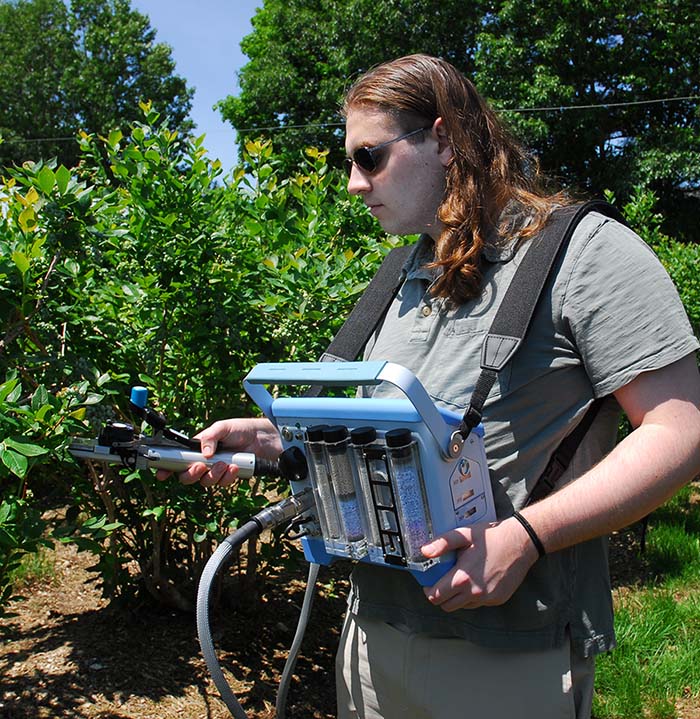
True differential analyzer for the ultimate accuracy & reliability.
The heart and soul of any photosynthesis system is the analyzer. Accurate, reliable, and stable measurement and control of CO2 and H2O are critical for high-level research. A “true differential analyzer”, the CIRAS-4 features 4 independent, non-dispersive gas analyzers for accurate, simultaneous measurement and control of both CO2 and H2O — a significant advantage over “gas switching” systems and a major requirement for most researchers. The analyzers act as absorptiometers measuring infrared absorption only. The temperature-controlled optical bench is pressure compensated ensuring the most accurate measurement of CO2 and H2O under changing ambient conditions.
No factory recalibration required
Expect nothing less than the most accurate, reliable, and stable calibration of CO2 and H2O for many years without the need for inconvenient, time-consuming, and costly return-to-factory calibration. Our innovative, proprietary Auto-Zero measurement technique ensures inherent calibration stability confirmed by more than 35 years of experience in gas analysis technology. It allows for very fast warm-up, quick adaptation to changing ambient conditions, and excellent long-term stability. Auto-Zero also minimizes effects on span gas sensitivity, IR source aging, and changes in detector sensitivity and electronics. Simple, periodic system checks are recommended to confirm system integrity and calibration.
Full environmental control:
Automated. Programmable. Standard.
The level of environmental control in the field with the CIRAS-4 is unsurpassed. The CIRAS-4 offers complete, independent, and automatic control of CO2, H2O, temperature, and light for response curves (i.e., A/Ci curves, light response, etc.) with real-time response. Control over all environmental parameters can be dynamic or pre-programmed for automated response curve generation. All power required for environmental control is provided by the internal rechargeable Li-ion batteries (no external power supply is required).
CO2 Control
Unlike some systems, automatic CO2 control is standard with the CIRAS-4. Automatic and programmable CO2 control is standard with the CIRAS-4. PP Systems pioneered the method of controlling CO2 back in 1992 (CIRAS-1) using mini CO2 cartridges that are commercially available and easily sourced worldwide. Our proprietary gas mixing technology and CO2 regulator provide an accurate, stable, and constant flow of CO2. Each CO2 cartridge provides at least 12 hours of continuous use in the field and our CO2 regulator and cartridge holder are maintenance free. If required, the CIRAS-4 can easily be connected to an external CO2 source as well as programmed and configured for ambient CO2 measurements.
| Measurement Range: | 0 – 10000 µmol mol-1 |
| Control Range: | 0 – 2000 µmol mol-1 |
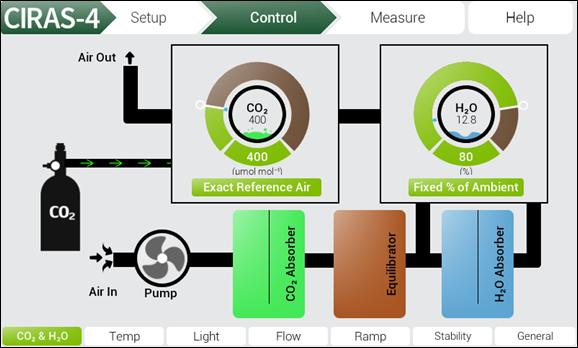
H2O Control
PP Systems also pioneered the method of controlling H2O automatically. Programmable H2O control is standard on the CIRAS-4. Onboard, self-conditioning desiccants are used for controlling H2O via user-defined settings. The CIRAS-4 can control H2O based on a percentage of ambient, VPD (Vapor Pressure Deficit), or a specific H2O concentration. The CIRAS-4 can easily be programmed for H2O measurements above and below ambient, and can also be configured for ambient H2O measurements.
| Measurement Range: | 0 – 75 mmol m-1 |
| Control Range: | 0 – Dewpoint |
See how quick and easy it is to set and adjust CO2, H2O, temperature, light, and flow rate on the CIRAS-4 Portable Photosynthesis System.
Temperature Control
The CIRAS-4 features the widest range, as well as the fastest and most reliable temperature control in the industry. Each leaf cuvette’s integral automatic temperature control is highly accurate and stable. Peltier coolers with heat sink and fan are mounted on all cuvette heads for precise control over a wide range of temperatures. The CIRAS-4 can be programmed to control to a specific leaf temperature, a specific cuvette air temperature or to track leaf to ambient. Temperature control can also be disabled.
| Temperature Control Range: | 12 oC below ambient to 15 oC above ambient |
| Ambient Temperature Limits: | 0-45 oC |
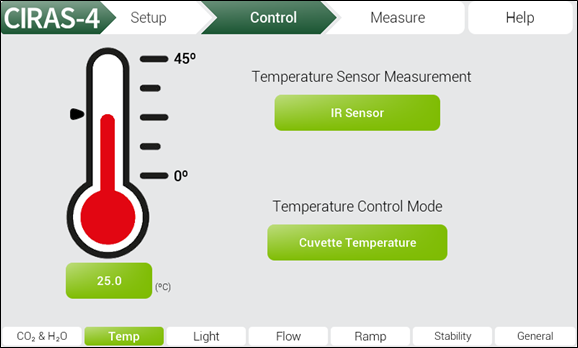
Light Control (Optional)
Automatic control of light intensity is achieved with our compact, low-power lightweight LED (RGBW-FR) light units available for each of our PLC4 Leaf Cuvettes.
| Measurement Range: | 0 – 3000 µmol m-2 s-1 |
| Control Range: | 0 – 2500 µmol m-2 s-1 |
Each light unit features a bank of red, green, blue, and white LEDs as well as far-red LEDs to allow users control of up to 30% of PFD light intensity. In addition to controlling light intensity, you can also control the proportion of light by wavelength, which can be especially useful for research on plant responses to different wavelengths.
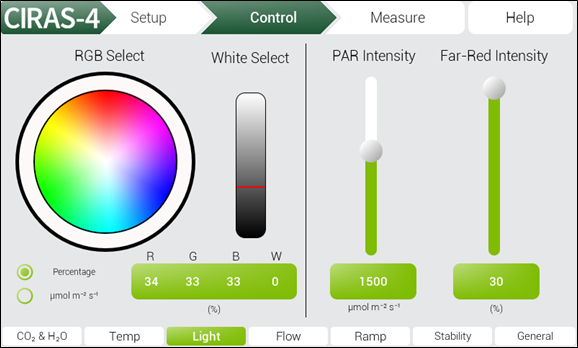
Test the benefits of CIRAS-4’s small system volume
Small System Volume: Proven to be faster & more accurate
When evaluating the different types of portable photosynthesis systems on the market, it’s very important to consider not only size and portability, but system volume as well. Size and chamber volume are critically important when it comes to rapid, accurate measurement of leaf gas exchange. The CIRAS-4 Portable Photosynthesis System’s small system volume ensures faster equilibration time resulting in the most rapid and accurate measurements available. These simulators will help to illustrate why.
Dilution Model:
This model illustrates the fundamental process of exponential dilution, in which flow rate and volume are the only variables that really matter. Select the Dilution Model tab and use the sliders to adjust the parameters. Calculate to watch the concentrations change in real time.
As you will clearly see, chambers with smaller system volume have fundamental speed advantages over chambers with large volume.
CIRAS-4 Model:
Based on the CIRAS-4 Portable Photosynthesis System including our PLC4 Universal Leaf Cuvette, this model demonstrates the transport time to move analysis (sample) gas back to the CIRAS-4 console. Also shown for comparison purposes is a typical IRGA-in-the-head system with much larger cuvette volume (~ 80 – 140 cc).
PLC4 Leaf Cuvettes
No tools required.
Head plates are secured in place by magnets for quick and easy change out in the lab or field.
Rulers on apertures.
Rulers are available on larger head plates to assist with better leaf area approximation.
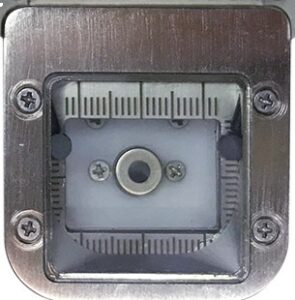
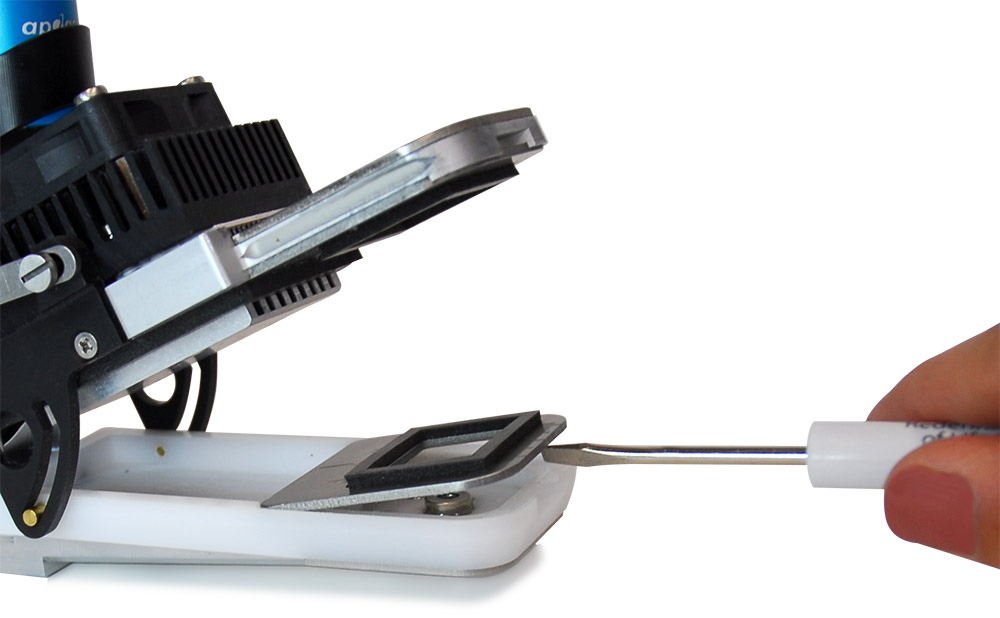
Minimal boundary layer resistance.
Advanced air mixing inside the chamber reduces boundary layer resistance.
Temperature control
All PLC4 Leaf Cuvettes offer a temperature control range of approximately 12°C below ambient up to 15°C above ambient with 0.1°C precision.
Easy and accurate leak diagnosis.
Direct pressure measurement inside the cuvette for easy and accurate leak diagnosis.
PLC4 Universal Leaf Cuvette
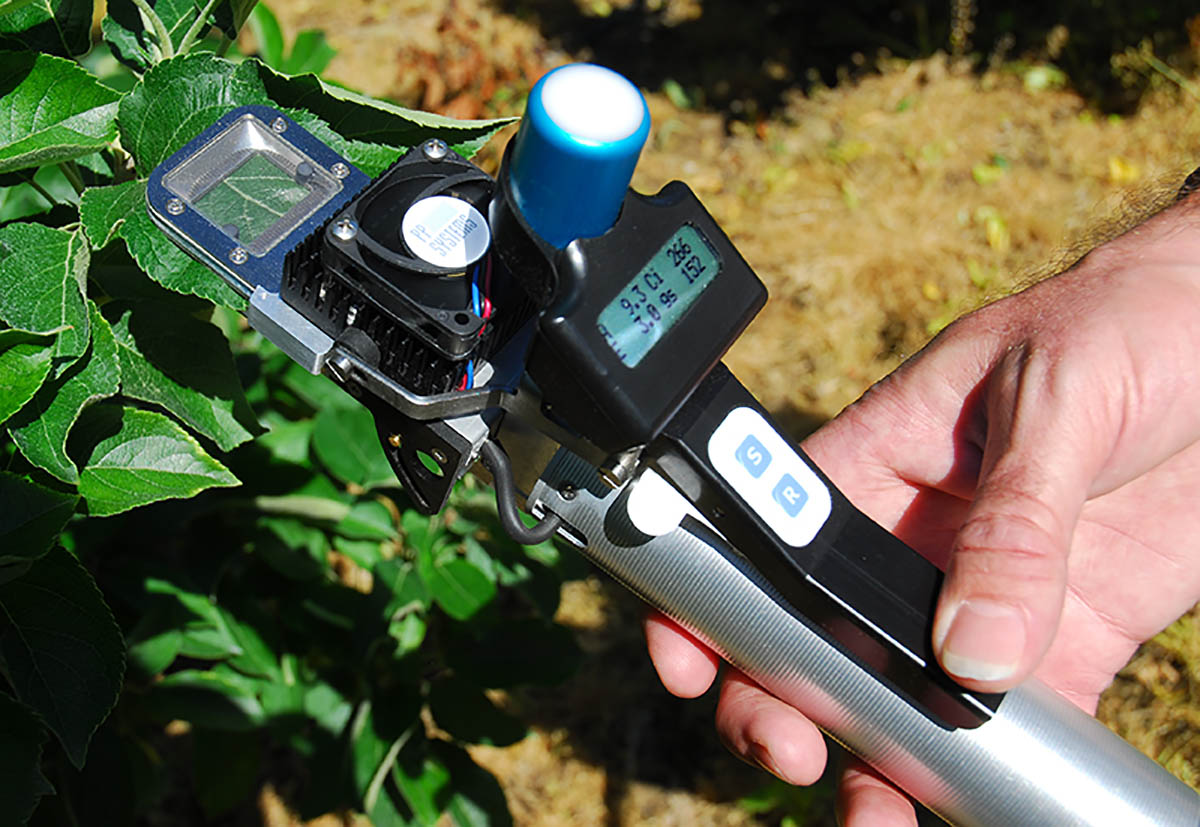
The PLC4 Universal Leaf Cuvette comes with three interchangeable head plates and is compatible with the CFM-4 Chlorophyll Fluorescence Module for simultaneous measurement of leaf gas exchange and chlorophyll fluorescence.
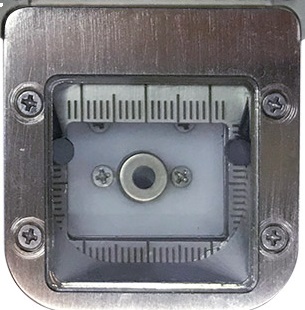
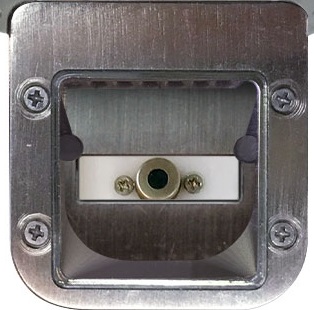
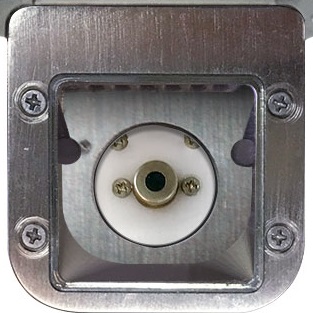
PLC4 Broad/Narrow/Conifer Leaf Cuvette
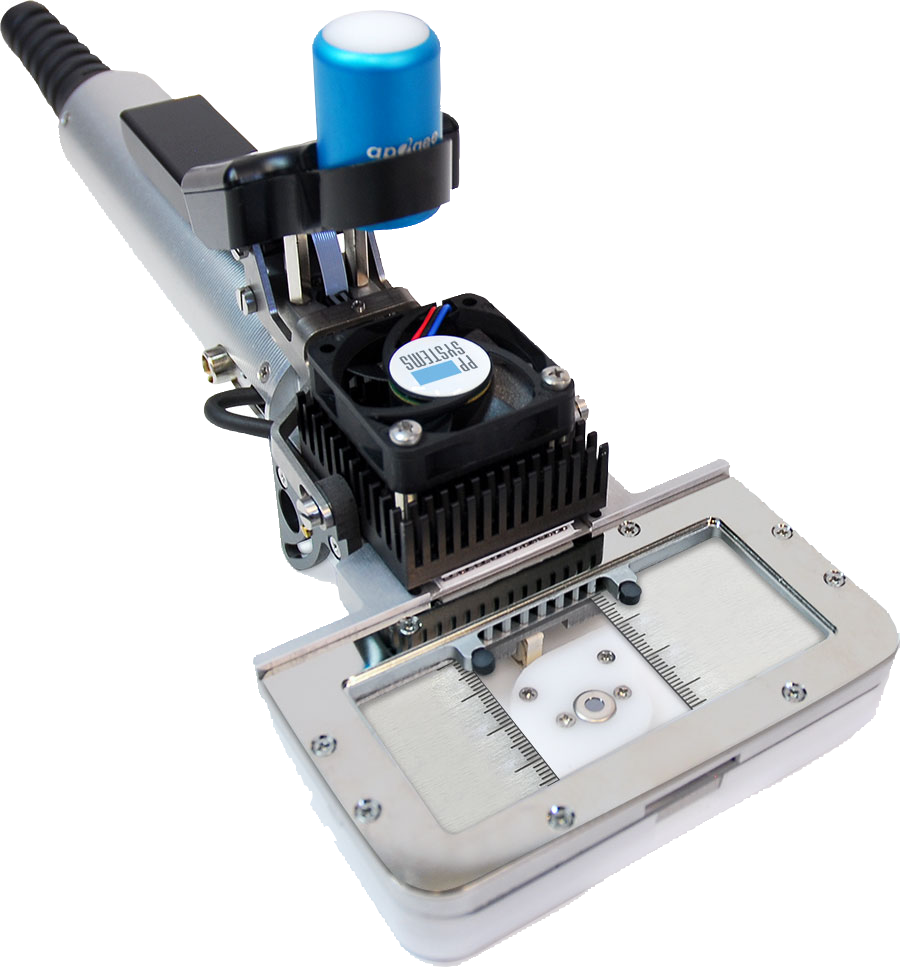
The PLC4 Broad/Narrow/Conifer Leaf Cuvette comes with three interchangeable heads for measurement on large, flat broad leaves, narrow leaves, and grasses and conifers.
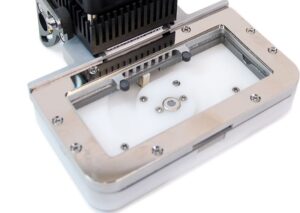
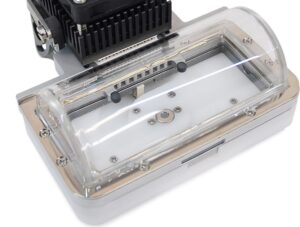
PLC4 LED Light Units (RGBW-FR)
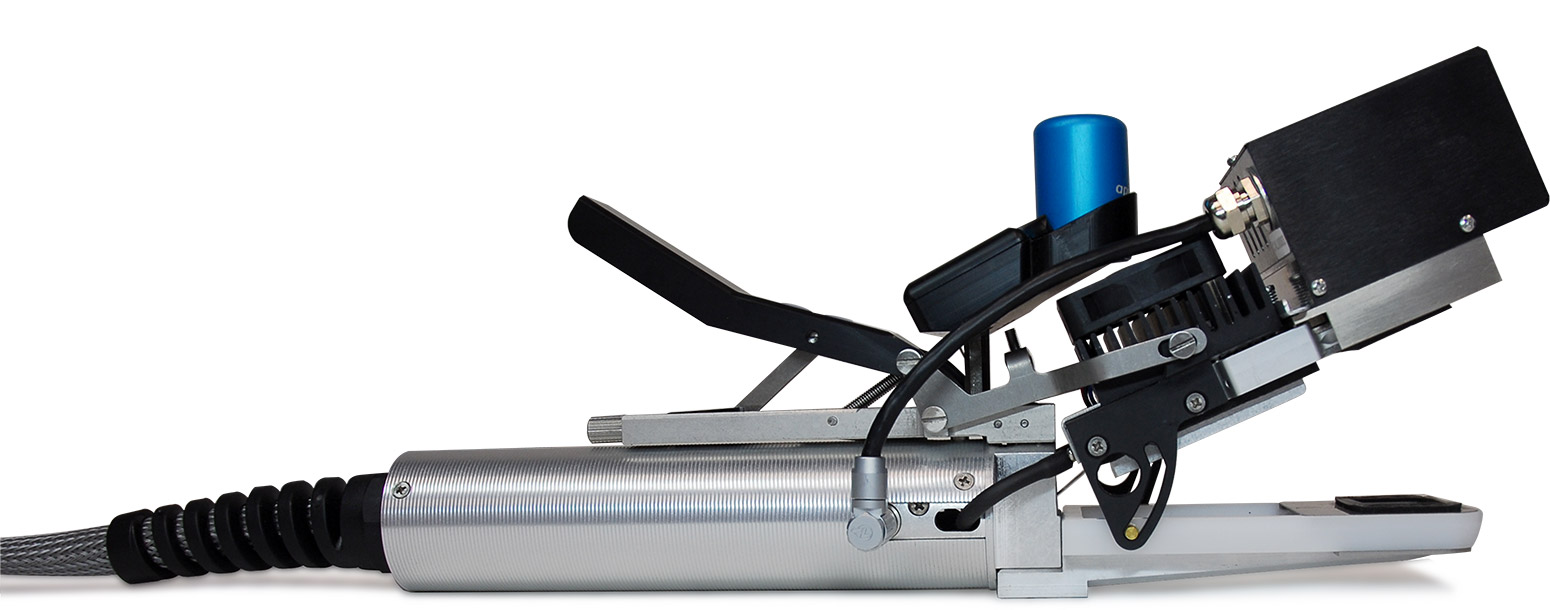
Automatic control.
Optional light units are available for automatic control of light for all PLC4 leaf cuvettes. Each light unit features a bank of red, green, blue, and white LEDs, allowing for automatic control of both light intensity up to 2500 μmol m-2 s-1 and proportion (%) of light by wavelength. All light units are designed to ensure uniform light distribution over the entire leaf area for accurate results.
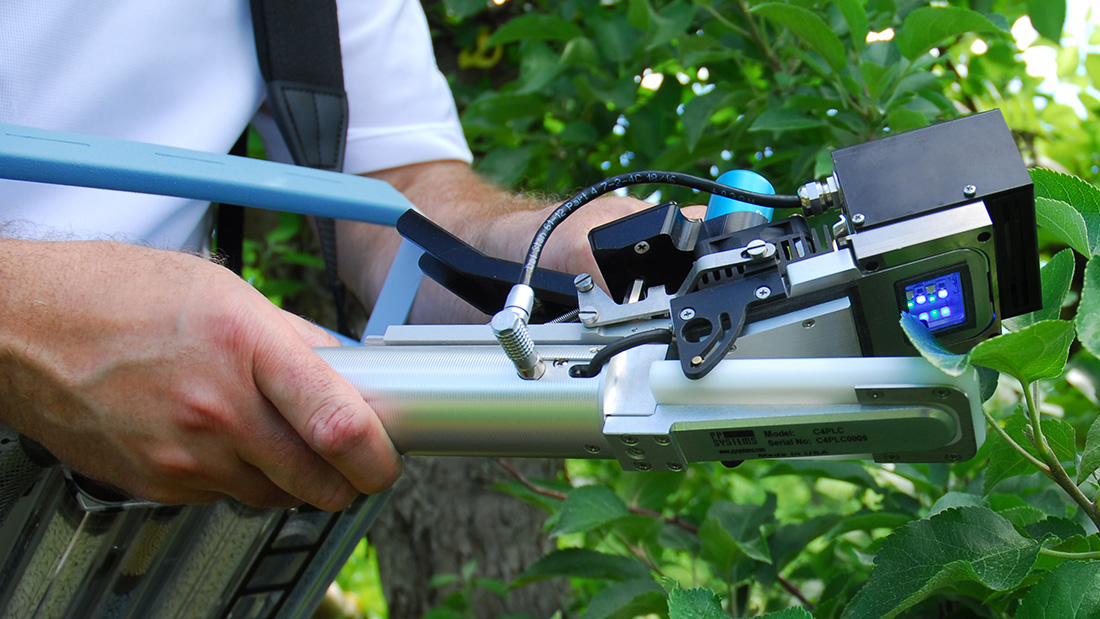
Far-red.
Our PLC4 LED light units are the only cuvette light units available with 4 far-red LEDs (730 nm +/- 5 nm). CIRAS-4 users will be able to control far-red up to 30% of Photon Flux Density (PFD), allowing for more accurate recreation of natural light.
Wavelength (RGBW-FR)
| Color | Peak | Full Width at Half Max |
| Red | 660 nm ± 10 nm | 20 nm |
| Green | 527 nm ± 7 nm | 38 nm |
| Blue | 447 nm ± 7 nm | 18 nm |
| White | 400 – 730 nm | |
| Far-red | 730 nm ± 10 nm | 32 nm |
| Light Control Range: | 0 – 2500 µmol m-2 s-1 |
Why is far-red important?
Far-red (700-750 nm) is about 18% of the photon flux in sunlight, and far-red makes up an even more significant fraction of the photon flux in understory conditions. Recent research has shown that this far-red light is photosynthetically active. Taking photosynthesis measurements with a light spectrum that does not include far-red (e.g., white or red/green/blue LEDs) will result in lower photosynthetic rates compared to photosynthetic rates under sunlight (with the same PFD). Being able to control the amount of far-red light during photosynthesis measurements will more accurately mimic rates under sunlight or understory conditions. CIRAS-4 users can control far-red up to 30% of Photon Flux Density (PFD), allowing users to recreate the natural light environment more accurately.
Relevant Citations
- Zhen, S., M.W. van Iersel, and B. Bugbee. 2022 Photosynthesis in sun and shade: the surprising importance of far-red photons. New Phytologist. https://doi.org/10.1111/nph.18375.
- Zhen, S., M.W. van Iersel, and B. Bugbee. 2021 Why far-red photons should be included in the definition of photosynthetic photons and the measurement of horticultural fixture efficacy. Frontiers in Plant Science 12:693445. https://doi.org/10.3389/fpls.2021.693445 (opinion article).
- Zhen, S. and M.W. van Iersel. 2019. Far-red light enhances photochemical efficiency in a wavelength-dependent manner. Physiologia Plantarum 167:21-33. https://doi.org/10.1111/ppl.12834.
- Zhen, S. and M.W. van Iersel. 2017. Far-red light is needed for efficient photochemistry and photosynthesis. Journal of Plant Physiology 209:115-222. https://doi.org/10.1016/j.jplph.2016.12.004.
- Zhen, S., & Bugbee, B. (2020). Far‐red photons have equivalent efficiency to traditional photosynthetic photons: Implications for redefining photosynthetically active radiation. Plant, cell & environment, 43(5), 1259-1272.
- Zhen, S., & Bugbee, B. (2020). Substituting far-red for traditionally defined photosynthetic photons results in equal canopy quantum yield for CO2 fixation and increased photon capture during long-term studies: Implications for re-defining PAR. Frontiers in Plant Science, 1433.
Is PAR really 400-700 nm? The McCree Curve revisited with evidence ePAR should be the new standard.
Dr. Bruce Bugbee breaks down the latest evidence that the officially recognized PAR (aka PPFD) range of 400-700 nm should be revised to include far-red photons up to 750 nm. The traditional photosynthetically active radiation range was defined based on research by Dr. Keith McCree and other scientists and has been the standard for measuring plant lighting efficacy for over 50 years. Should the new “ePAR” (extended PAR) range become the new standard? Check out the newest evidence and implications presented in this video and judge for yourself.
How to create an exact light spectra match including far-red.
See how quick and easy it is with the CIRAS-4 Portable Photosynthesis System
Simultaneously measure photosynthesis & chlorophyll fluorescence
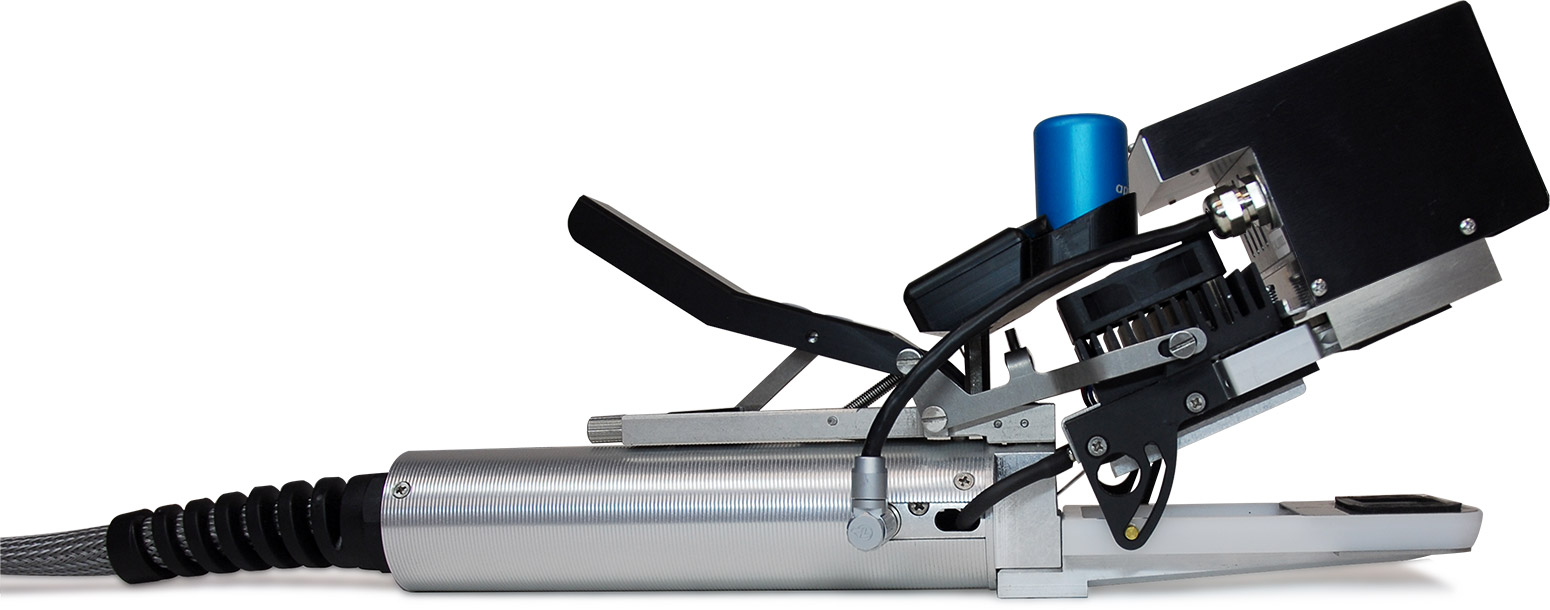
You can measure leaf gas exchange and chlorophyll fluorescence simultaneously with the CIRAS-4 Portable Photosynthesis System & CFM-4 Chlorophyll Fluorescence Module.
MultiPulse™ Technology for Accurate Estimation of Fm’
The CFM-4 is capable of delivering high-saturating pulses up to 10000 µmol m-2 s-1 which is extremely useful in accommodating a wider range of ambient light conditions. The CIRAS-4 is the only system available that features our innovative MultiPulse™ technology.
MultiPulse produces a sequence of user-defined, lower-saturating pulse light levels, avoiding the risk of photodamage to the leaf while accurately estimating apparent Fm‘.
A pulse-amplitude-modulated (PAM) fluorometer, the CFM-4 provides both dark- and light-adapted chlorophyll fluorescence measurement parameters including photochemical vs. non-photochemical quenching and electron transport rate.
Automatic control
The CFM-4 offers automatic control of temperature and light intensity (0-2500 µmol m-2 s-1) as well as ratio of red/green/blue/white LEDs, and far-red (0-30% of PAR).
A multi-use accessory!
The CFM-4 is elegantly designed with all light sources and fluorescence detection capabilities built directly into one lightweight, compact unit. The CFM-4 can also act as an actinic light source for leaf gas exchange as well as a stand-alone fluorometer when leaf gas exchange data is not required.
OJIP fast-induction kinetics
When performing measurements of photosynthesis and chlorophyll fluorescence that include an initial and/or concluding Fv/Fm measurement, the system will automatically generate a “fast fluorescence” file containing the fast-induction kinetics data needed for more detailed OJIP analysis based on the Fv/Fm measurements, and post-processing couldn’t be faster or easier!
Fast-fluorescence induction kinetics (OJIP) can provide valuable insight into the photochemical activity of Photosystem II & the electron transport chain.
Advanced Intuitive Software
Advanced touch navigation & outstanding readability.
The CIRAS-4 offers highly responsive advanced touch navigation for all system operations from its large, full-color sunlight-readable touchscreen offering unsurpassed readability even under high sunlight conditions.
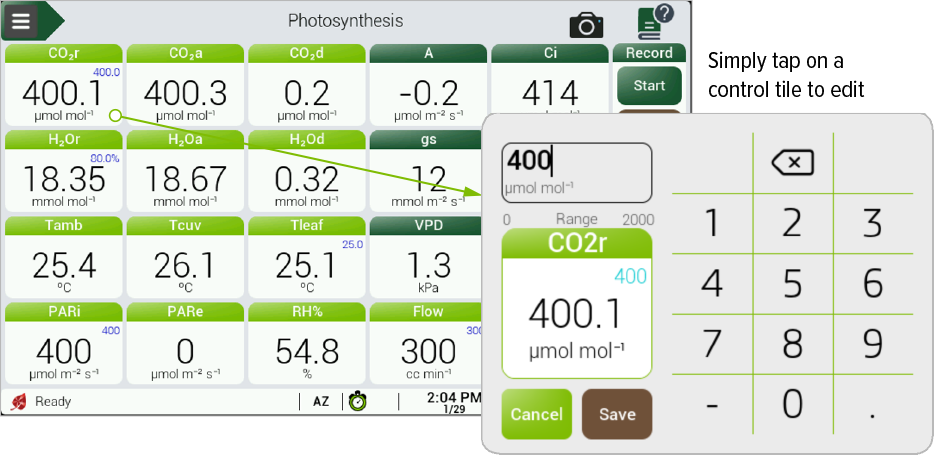
Your data your way
It’s all about the data. Not only can you trust the CIRAS-4 to provide highly accurate data quickly, you can customize your entire data collection and research experience all from the touchscreen.
Custom data files and comments
Create your own unique file names using letters, numbers, and symbols, and adding comments for further detail is quick and easy.
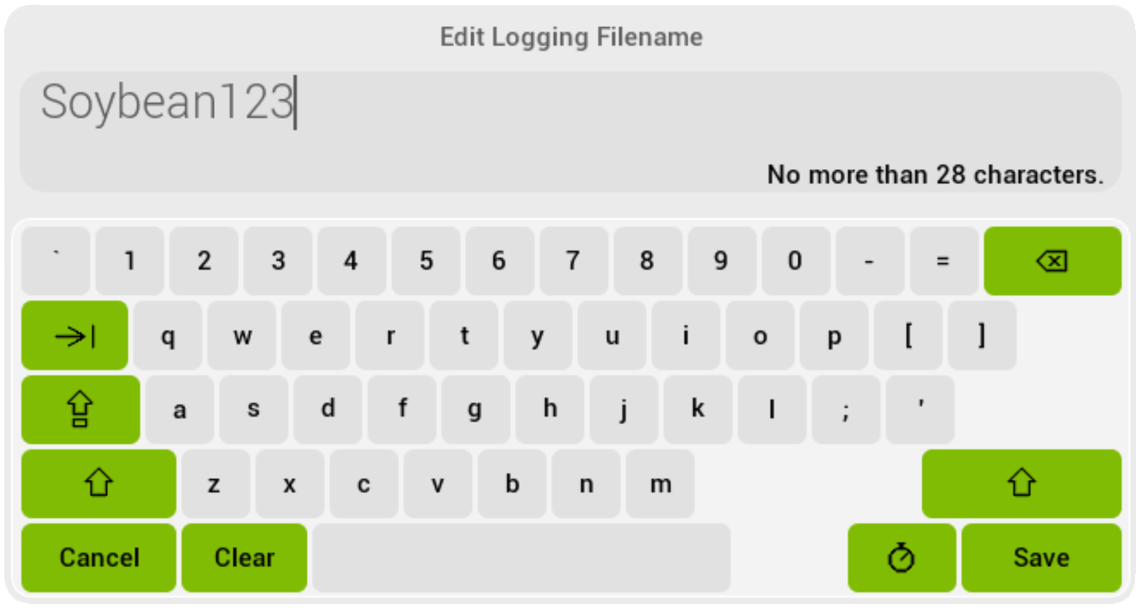
Choose how you view your data
Graph up to six parameters at a time during measurement including zoom, pause, and resume, and easily customize the X and Y axis for each parameter.
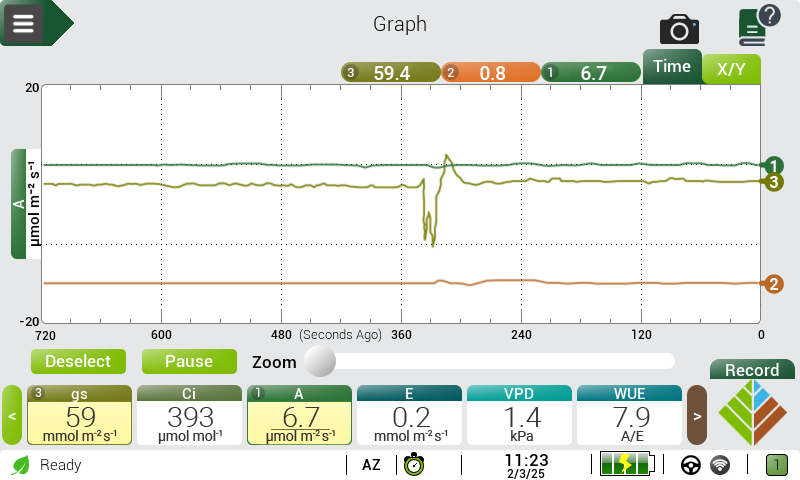
Monitor measurements remotely
Monitoring measurements locally and remotely is easy with the CIRAS-4 Portable Photosynthesis System. Simply clamp your leaf into the cuvette, start your measurement and follow it in real-time on your PC or tablet!
Measurements in minutes
Got a question? Built-in system help and user tutorials are designed to guide even the most inexperienced user every step of the way. technology.
Unique multi-user profile system
Set up to eight unique profiles based on application, user, experiment, etc.—very useful when multiple users share a single system.
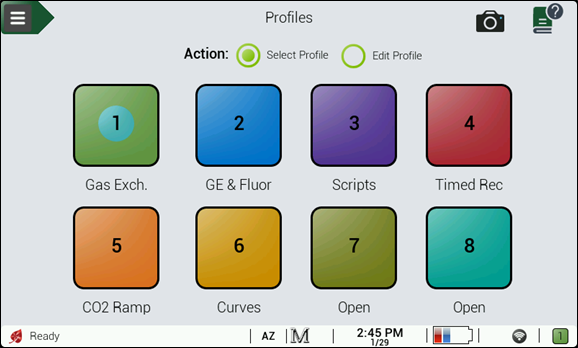
Stability criteria
Set your own stability criteria for up to 12 parameters to alert you and the system when measurements are stable and ready to record.
Rapid A/Ci Curves in Minutes with the SSCO2R™ Method
SSCO2R Method™
The Single-Step CO2 Response Method – No empty chamber step or post processing needed!
The SSCO2R Method is a new high-speed CO2 ramping technique that eliminates all post-processing, allowing A-Ci curves to be produced in real time directly on the CIRAS-4 console.
Photosynthetic acclimation to temperature is affected by night temperature in Zea mays
J Bunce – Photosynthetica, 2024
Our Original High-Speed CO₂ Ramping Technique
The CIRAS-4 has the ability to rapidly change the CO₂ gas concentration while simultaneously and continuously recording data. Linear ramps of CO₂ concentration are even simpler to program and record than in previous instruments. Now that there is no longer a need to define a response script for a ramp test in the CIRAS-4, the process is faster than ever.
The highly versatile CIRAS-4 Portable Photosynthesis system is suitable for a wide range of applications, including ecology, agronomy, horticulture, climate and environmental research, and forestry.

